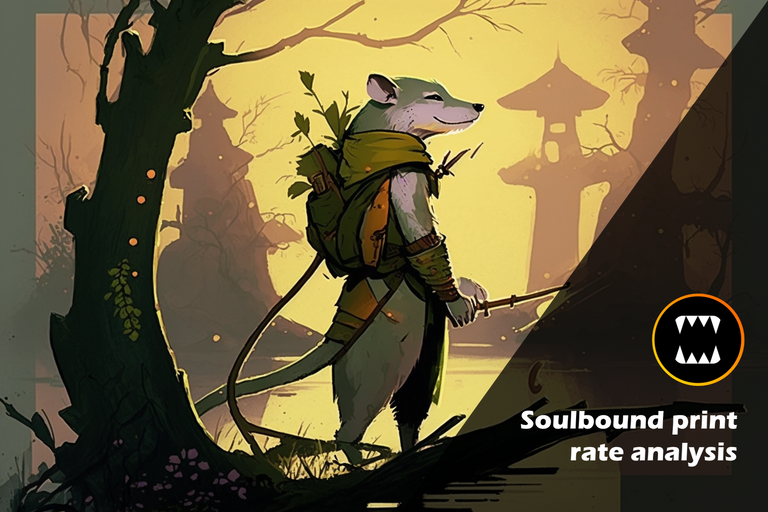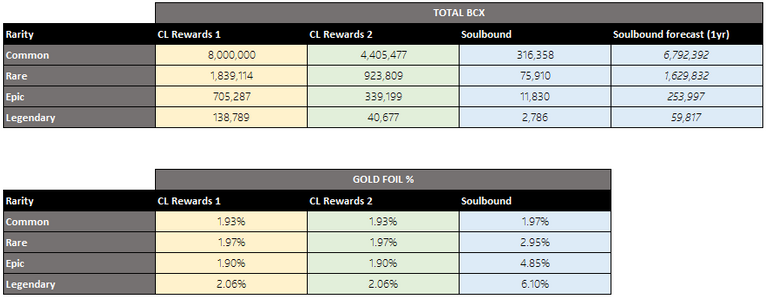
The soulbound rewards cards starting going in print about half a month ago, so it's time to check in on a few things related to distribution rate. In this post I look at forecasted distribution rates and also GF % by rarity.
Overall distribution takeaways:
- At the current print rate, it will take the following amount of time for Soulbound cards to reach the print rate of CL Rewards Phase 1 (i.e. Venari Heatsmiths, Djinn Oshannus, etc.):
-- Common: 1.17 years
-- Rare: 1.13 years
-- Epic: 2.78 years
-- Legendary: 2.32 years - At the current print rate, it will take the following amount of time for Soulbound cards to reach the print rate of CL Rewards Phase 2 (i.e. Vampire Bat, Jared Scar, etc.):
-- Common: 0.65 years
-- Rare: 0.57 years
-- Epic: 1.34 years
-- Legendary: 0.68 years - Based on the numbers above, you can see that the Epic cards will be the scarcest when comparing to previous rewards distributions
- Epic and Legendary cards are relatively scarcer vs their common/rare counterparts when comparing to the previous rewards sets; however that's likely because of the increased drop rates of Common and Rare cards (specifically the high card multipliers)
Gold Foil distribution takeaways: - It's fairly obvious when looking at the Soulbound GF drop rates, but it's worth mentioning that these are higher than previous GF reward drop rates. Specifically:
-- Common GF drop rate is roughly equal (1.97% vs. 1.93%)
-- Rare GF drop rate is ~50% higher (2.95% vs. 1.97%)
-- Epic GF drop rate is ~155% higher (4.85% vs. 1.90%)
-- Legendary GF drop rate is ~195% higher (6.10% vs. 2.06%)
So if you feel like you're seeing lots of GFLs show up in people's Twitter posts, it's not a surprise. However, from an overall print distribution point of view, it looks like they've done a good job of ensuring the Epic and Legendary cards remain scarce relative to their Common and Rare counterparts.
Here's the data. Couple of notes:
- For easy comparison, I've added the Chaos Legion rewards cards (phase 1 in yellow and phase 2 in green).
- Each cell is an average for that rarity/set combo (for both the distribution and GF % data)





